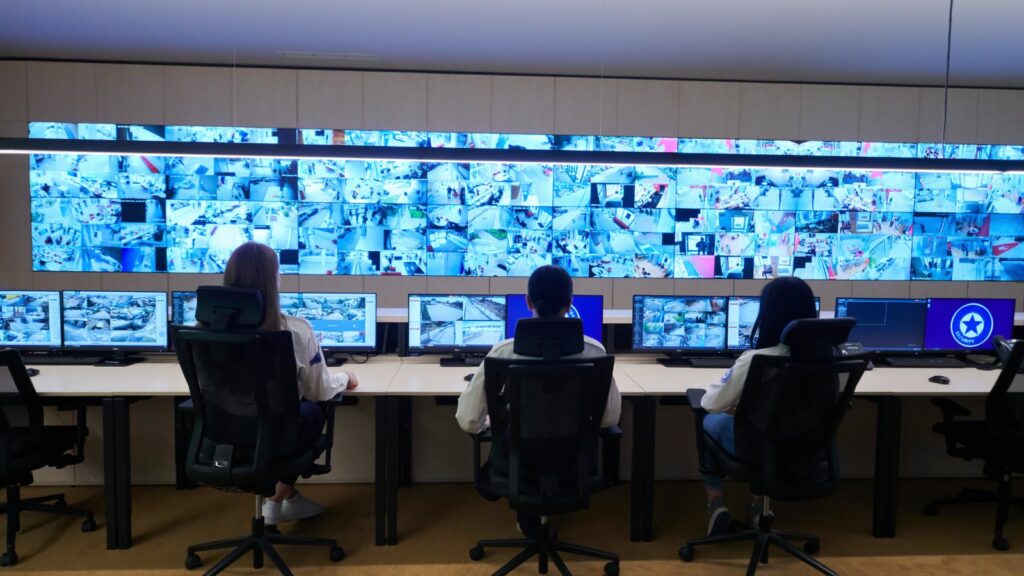Diving into the intricate world of defense technology, there’s one organization that stands as a cornerstone – the Defense Technical Information Center (DTIC). This key entity serves as the largest central resource for DoD and government-funded research, development, technical, and engineering information.
Defense Technical Information Center
Delving deeper into the inner workings of the Defense Technical Information Center (DTIC) uncovers a well-oiled machine intricately designed for the meticulous management of defense technology research. This section provides intricate details about DTIC’s structure, operations, and the broad range of services it offers.
The Structure and Operation of the Center
 Diving headfirst into DTIC’s structure brings into focus its prodigious operational efficiency. Governed by the US Department of Defense, the center runs under the auspices of rigid regulatory frameworks. In the latticework of offices and personnel, teams are regionally based, each focusing on explicit sectors of defense research.
Diving headfirst into DTIC’s structure brings into focus its prodigious operational efficiency. Governed by the US Department of Defense, the center runs under the auspices of rigid regulatory frameworks. In the latticework of offices and personnel, teams are regionally based, each focusing on explicit sectors of defense research.
DTIC’s operations hinge on a sophisticated online system, codenamed ‘DoDTechipedia’. It’s a multi-faceted tool, operating as a collaborative platform connecting the defense technology community and enabling the sharing of unclassified defense technical data. Integral to its success, DoDTechipedia allows seamless integration of advanced research findings, fostering innovation and promoting the development of groundbreaking defense technologies.
The Information and Services Provided
 In terms of information, DTIC offers a veritable treasure trove. It houses an extensive collection of technical reports and research findings, amounting to over 4 million documents. Topics range from military engineering, biological and medical sciences, environmental pollution and control, to behavioral and social sciences.
In terms of information, DTIC offers a veritable treasure trove. It houses an extensive collection of technical reports and research findings, amounting to over 4 million documents. Topics range from military engineering, biological and medical sciences, environmental pollution and control, to behavioral and social sciences.
DTIC services can be classified into three main categories: Scientific and Technical Information Network (STINET) Services; Research and Engineering (R&E) Gateway; and DoDTechipedia. STINET provides bibliographic access to previous and ongoing research; R&E Gateway facilitates the application process for potential researchers; and DoDTechipedia, as noted earlier, serves as a collaboration platform. Each tool, in its own capacity, empowers the defense community to work cohesively and efficiently.
The Role of Defense Technical Information Center in National Security
The Defense Technical Information Center (DTIC) serves as a pillar of national security, maintaining an instrumental role in safeguarding confidential data, contributing to the fortification of national defense.
Handling Confidential and Sensitive Information
The DTIC administers a tight grip on handling highly sensitive and confidential information. It employs advanced security protocols and strict access control mechanisms, ensuring safe storage and distribution of sensitive defense data. An instance of such capability manifests in its safeguarding of 4 million technical reports, covering diverse topics from military engineering to biological sciences. DTIC’s restrictions on data access, backed by Department of Defense (DoD) regulatory frameworks, extend to its interactive platform, ‘DoDTechipedia’. While this platform serves as a hub for the defense community to share unclassified data, it enforces stringent measures to prohibit unauthorized access. Thus, DTIC plays a crucial role in preventing potential security breaches, which could have escalated consequences on national security.
Contributions to the Strengthening of National Defense
 DTIC’s contributions in bolstering national defense resonate through its facilitation of cutting-edge defense research and innovation. This Center plays an indispensable role by offering valuable resources such as the Scientific and Technical Information Network (STINET) Services and the Research and Engineering (R&E) Gateway. The STINET provides bibliographic access to a vast library of research, aiding researchers and defense personnel in their projects.
DTIC’s contributions in bolstering national defense resonate through its facilitation of cutting-edge defense research and innovation. This Center plays an indispensable role by offering valuable resources such as the Scientific and Technical Information Network (STINET) Services and the Research and Engineering (R&E) Gateway. The STINET provides bibliographic access to a vast library of research, aiding researchers and defense personnel in their projects.
On the other hand, the R&E Gateway expedites the application process for prospective researchers, promoting seamless integration into defense projects. This efficient operation allows for real-time advancements in defense technology, resulting in strategic progression of national defense capabilities. Furthermore, DoDTechipedia’s role in promoting collaboration implies fostering an environment of breakthrough innovations and novel strategies. Hence, DTIC stands as a testament to the robust national defense framework, reaffirming its commitment to facilitate technological prowess in the realm of security.
Advancements in Defense
The Defense Technical Information Center (DTIC) stands as a beacon of excellence in defense technology. It’s not just a repository of technical data but a pioneer in facilitating innovation and advancements in the defense sector. From its inception in 1945, DTIC has grown into a powerhouse of defense technology insight, with a database boasting over 4 million technical reports.



